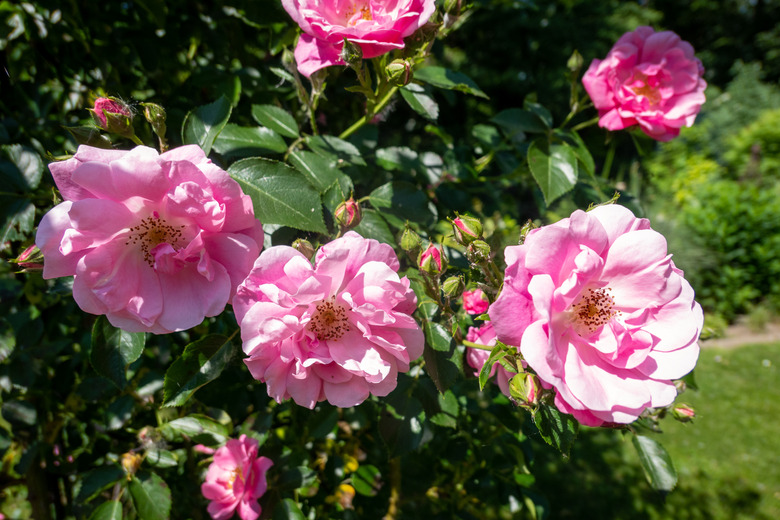Homemade Rose Bush Spray
A homemade rose bush spray can take down pests that have set up colonies along the tender leaves and buds. Pests left unchecked can decimate an otherwise healthy rose bush (Rosa spp.), causing blooms to shrivel or buds to drop. When applied correctly, a homemade rose bush spray can safely exterminate the creepy critters, as well as staunch diseases, without causing harm to you, your children, your pets or the environment.
Applying Homemade Rose Bush Spray
Applying Homemade Rose Bush Spray
In order to keep pests at bay, check the rose bush regularly. At the first sign of aphids, beetles, thrips, mites, rose leafhoppers or other pests on the rose bush's leaves and buds, blast the little buggers with water. Be cautious because too much water can bring on powdery mildew.
Apply homemade rose bush sprays when the plant's leaves and buds are dry and when bees aren't buzzing around the blossoms collecting pollen. Spray from the top and move down the plant. Make sure to get the underside of the leaves, where pests tend to congregate. A good dosing of the homemade spray in all the crevices of the leaves and flowers and bends of the stems will ensure that the pests are gone for good.
A good time to begin looking for and controlling rose bush pests is in spring or when temperatures climb to 50 degrees Fahrenheit or above. That is prime time for pests to begin populating the garden.
Soap as a Pesticide
Soap as a Pesticide
Because household soaps and detergents are not formulated for use on plants, they're not the best products to use; in fact, many of these may actually damage your plants. But horticultural soap goes a long way toward getting rid of many garden insects. To make a soap-based pesticide, simply dilute the soap in water, according to label directions. Repeat the application at the rate indicated on the label, spraying it directly on places where the aphids and mites are visible.
Baking Soda Homemade Spray
Baking Soda Homemade Spray
A common homemade spray for rose bushes uses a small amount of baking soda, which acts as a preventive (not a curative) for some fungal diseases. It works by increasing the alkalinity of plant surfaces, making them inhospitable for fungal growth. Don't overdo this application, however, because too much baking soda may damage the plant. Dissolve 1 tablespoon baking soda in 1 gallon water, and spray plant surfaces.
Homemade Spray for Diseases
Homemade Spray for Diseases
For diseases such as black spot and rust, a simple homemade rose bush spray made of 1 tablespoon of baking soda and a teaspoon of vegetable oil added to a gallon of water can staunch the spread. Make sure to remove any infected leaves and dispose of them.
Powdery mildew can be fought with a simple spritz of cold water early in the morning when the plant will have time to dry in the day's sunshine. Only spritz the leaves from above. Don't douse the plant in water and swamp the leaves and plant. Overwatering can exacerbate the issue. Allow the leaves to dry and repeat until the disease has been stopped.
References
- Horticulture Magazine: Safe Rose Spray Recipe That Really Works
- University of California Agriculture and Natural Resources: Oils, Important Garden Pesticides
- Insect Cop: How to Get Rid of Aphids on Roses
- Heirloom Roses: Make Home Remedies for Pests and Diseases
- Clemson Cooperative Extension: Rose Insects and Related Pests
